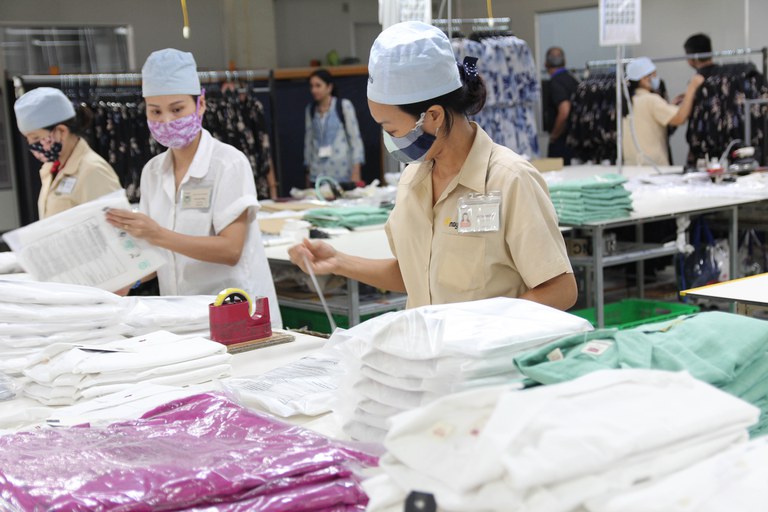ILO releases new guides to help garment factories become more resilient
The COVID-19 crisis has shocked markets around the world and will likely have a growing and long-lasting impact on the world economy. In Asia, garment manufacturers in multiple countries have been forced to stop production or reduce capacity due to the major disruption of end-to-end global supply chains and the emerging health crisis, which has resulted in national restrictions on people as well as economic activity. What makes this current situation particularly challenging is that both the demand and supply side of operations are being affected.
Reports from garment-producing countries in Bangladesh, Cambodia, India, Indonesia, Myanmar, Sri Lanka and Vietnam have emphasized the gravity of the situation, for garment factories as well as for workers. The negative affect by the COVID-19 situation for this sector will continue. A lack of supply, a lack of demand due to consumer’s loss of income and fear of spending money in a time of recession, labour shortages and compulsory temporary closures – these are just some of the scenarios that have already occurred or will do so in the near future.
Who suffers most from the effects of COVID-19?
It is not difficult to guess who is among the most vulnerable group in this context. The textile workers are confronted with job cuts and short-time work.This reduction in working hours or layoffs could have devastating effects on millions of workers and their families. Especially, young women and workers with limited skills and education will have difficulties to cover their basic needs and will find themselves in a highly precarious situation. Female workers are at increased risk of violence and harassment because they are more homebound due to the pandemic.
How can garment factories navigate the COVID-19 pandemic and build business resilience?
The economic impact of COVID-19 and the tragic human consequences, are expected to be significant. To mitigate the impact, garment manufacturers need to improve resilience and prepare for longer-term impacts on their business.
But which recommendations should garment manufacturers follow? What concrete measures can they implement in factories? And how can they safeguard their workers and themselves? Responding to the urgent needs of the garment industry, the ILO has developed a series of six action-oriented guides for garment factory managers to navigate the COVID-19 crisis:
- Managing your cash flow: Keep track of your factory’s cash flow to better navigate your factory during this time of crisis.
- Reducing costs: Reduce costs to ease financial liquidity and cash flow pressures on your factory operations.
- Finding alternative sources of income: Identify new revenue streams to ensure that your factory can survive the pandemic.
- Going online: Establishing an online presence: Establish an online presence in order to promote your factory and to facilitate communication with buyers.
- Organizing the factory for safer and more efficient operations: Reorganise your factory to provide better safety measures and to improve its operational efficiency.
- Communicating with your workers: Maintain good internal communications for a more responsive and productive factory environment during the crisis.
- Attachment: Factory cash flow template.
With simple and easy-to-implement recommendations, and step-by-step instructions, checklists and additional templates, the guides help factories take action to improve business resilience. They have been designed primarily for second tier and subcontracting factories. The guides are available in Bengali, Chinese, English, Khmer and Thai.

